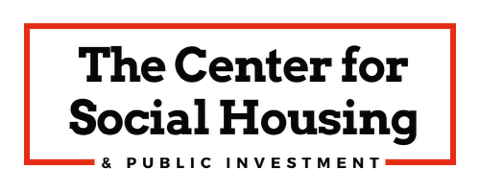Part 1: The Role of Global Finance as a Driving Force in DC’s Affordable Housing Crisis
The collapse of the subprime mortgage industry in 2008, and the foreclosure crisis that accompanied that collapse, made millions of homeowners into permanent renters overnight. To add insult to injury, many people who lost their homes to foreclosure saw those same homes ultimately fall under the ownership of the banks and Wall Street speculators that caused the crash in the first place. The result was one of the greatest transfers of wealth from the working class to “the One Percent” in U.S. history and the deepening of an already existing affordable housing crisis. This crisis has only worsened since 2008; and has since come to define life for many people in the United States and around the globe. The economic meltdown left in the wake of the subprime mortgage debacle exposed the dangers of marrying housing policy to the highly financialized and high-risk world of Wall Street gambling. However, instead of learning from that catastrophe and correcting course to achieve greater housing stability and affordability, the worlds of both finance and real estate doubled down on the concept that housing is a hyper commodity to be financialized and speculated on in order to make huge profits for investors. In essence, the financial industry and real estate sector have partnered to act as a sort of Dr. Frankenstein and have created an out-of-control monster that thrives on land speculation, sky rocketing rents and political corruption.
Global investment and the profit motive
Wall Street and big finance have fully and forcefully intervened into every aspect of the housing market, and this intervention is changing the face of real estate and rental markets everywhere. How is this happening? To put it simply, there is an avalanche of money that is being invested in real estate around the globe. For context, in 2020 the value of global real estate was about $326.5 trillion, or almost four times that of global gross domestic product. This makes real estate the world’s most significant store of global wealth and more valuable than all global equities and debt securities combined. The investors that are gobbling up this real estate are often referred to as institutional investors. Common types of institutional investors are banks, hedge funds, venture capital funds, sovereign wealth funds and Real Estate Investment Trusts. These institutional investors gather money from their clients and then pool that money together to invest, each year pouring hundreds of billions of dollars into the global real estate market. Further, and this is the most important part for the reader to understand, institutional investors are investing their money into the global real estate market to maximize profits from their investments. In fact, profit maximization is not just the primary concern, it is their only concern.
Hedge fund and sovereign wealth fund managers do not prioritize affordable housing, sustainable local economies or solving social issues- their only concern is the amount of money their investments will yield. This profit-maximization ideology is the driving force that determines the type of development in various real estate markets. As such, development looks different depending on where you live. In the urban real estate markets along America’s coastal cities- sometimes referred to by investors as “capital cities” (New York, San Francisco, Los Angeles, Boston, Washington DC) this money is often invested in luxury real estate.
Clearing the way for the luxury boom
So how does the money from these investors turn into luxury housing? To answer this question, it is instructive to turn to the role of developers in this process. Developers propose housing development projects and then convince willing investors to finance these projects. In essence, these developers are like vacuum cleaners that suck up the money from institutional investors and use that money to build housing. In “capital cities” around the globe, the type of projects that are the most attractive to invest in are luxury real estate developments- this is because luxury projects produce the greatest profit margins. Once these projects are financed and the plans to build them are finalized, land values begin to soar. This escalation in land value then leads to more large-scale development firms, with access to institutional investor capital, to buy up more land and invest in more luxury development.
By inflating land values, only developers with access to institutional investor money are then able to purchase land in capital cities. This land speculation essentially eliminates small-scale localized development that could otherwise produce affordable housing. Ironically, the same developers that drive up land value, then argue the high price of land makes it impossible for them to build anything unless they are able to charge premium rents and thus maximize their profits. This profit maximization in turn allows the developers to deliver returns for their investors. These returns keep investors happy and encourage them to continue financing luxury projects. Hence the boom of the luxury real estate market.
Conclusion
A profit driven system which promotes land speculation and monopoly will never produce housing that rationally and efficiently meets the needs of the people seeking out housing in that system. Instead, it will produce what we have seen in Washington DC, a market that is irrational and out of reach for many working-class Washingtonians. If a system is incapable of providing housing at a reasonable cost, it is incumbent on government to take action to ensure that people are able to access housing they can afford. However, as the next part of this series lays out, DC local officials not only have failed to implement such measures, they have actually adopted policies that have made the housing crisis worse.
Part 1: The Role of Global Finance as a Driving Force in DC’s Affordable Housing Crisis
Part 2: The Economics of Speculation, Demolition and Displacement; A Worsening of Washington DC’s Affordable Housing Crisis
Part 3: The Economics of Housing As a Human Right; How Social Housing Can Solve The Affordable Housing Crisis by Using Public Resources for the Common Good
Part 4: Social Housing in the United States- An Idea Whose Time has Come




